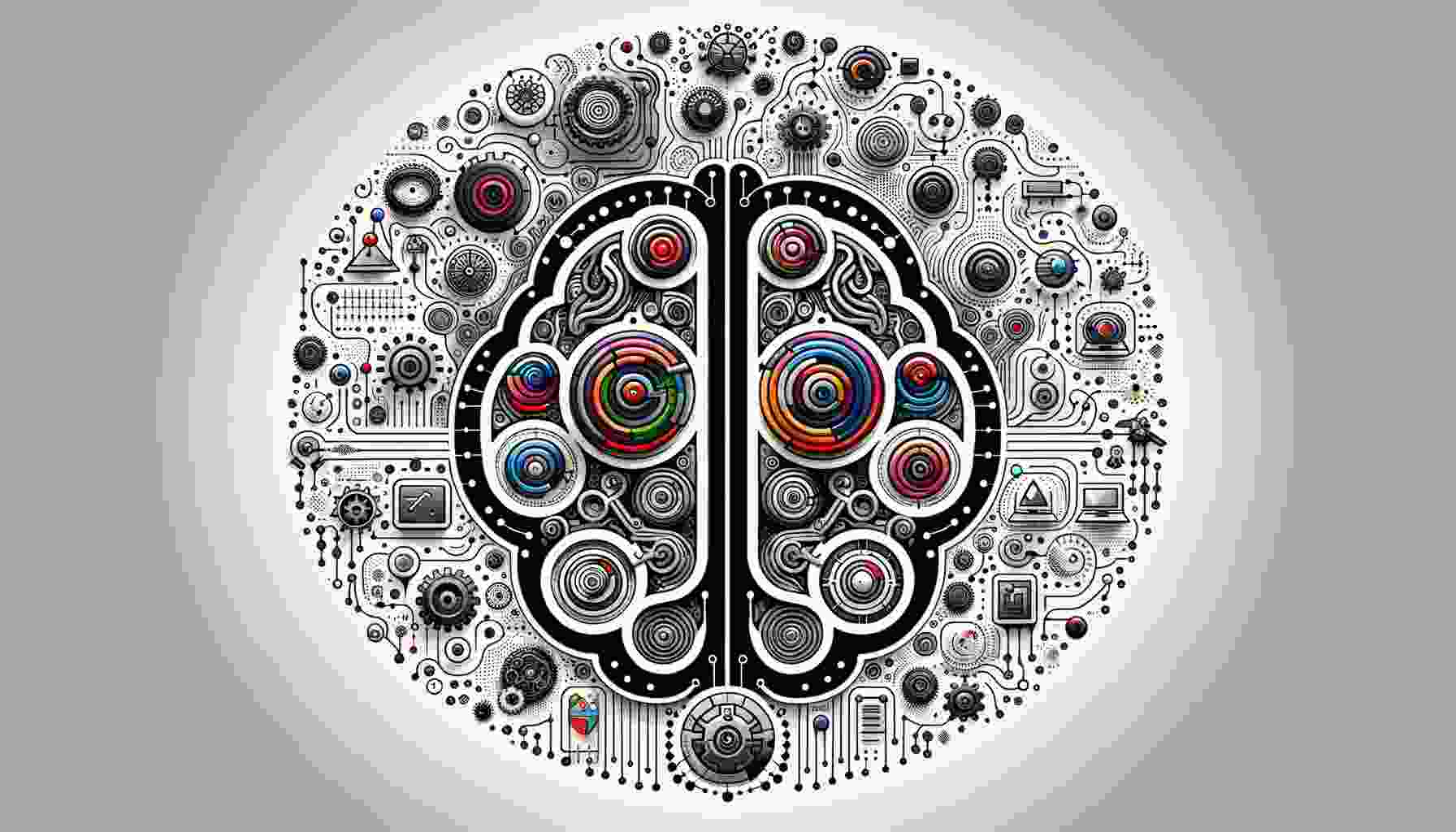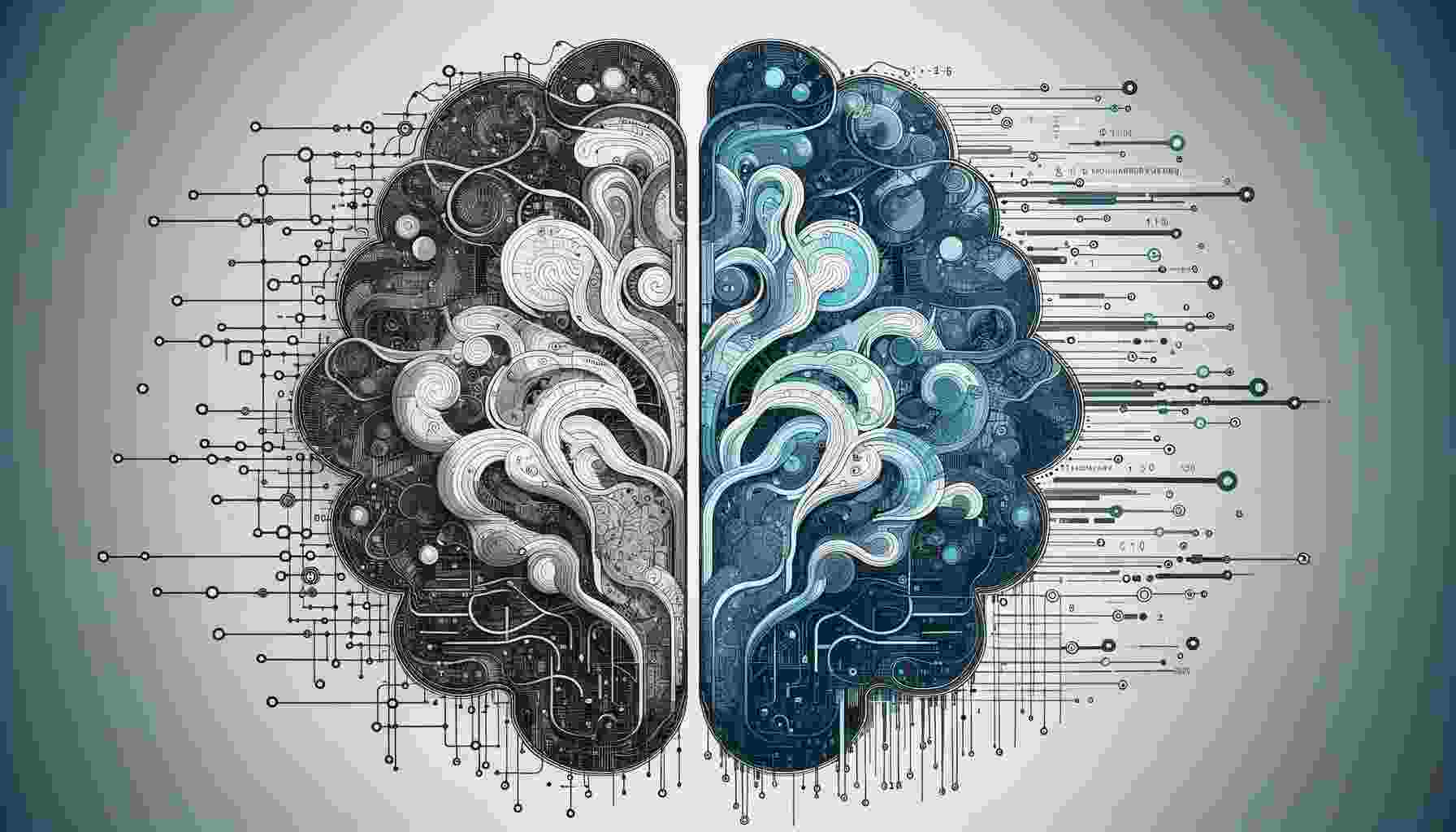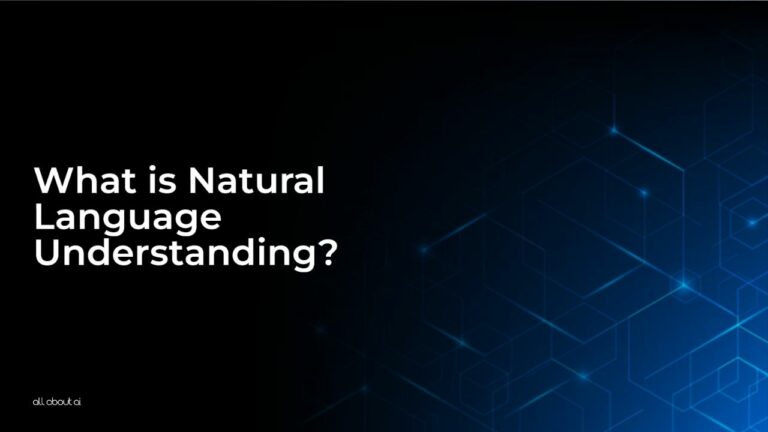What is natural language understanding? It represents a pivotal aspect of artificial intelligence (AI) that focuses on enabling machines to comprehend and interpret human language. It goes beyond mere word recognition, delving into the nuances of context, intent, and sentiment in language.
Looking to learn more about natural language understanding? Keep reading this article written by the AI specialists at All About AI.
What is Natural Language Understanding: Secrets of AI Communication
Have you ever talked to a computer, and it understood what you said, like a friend? Well, that’s because of something called ‘natural language understanding.’
This means that the computer can not only hear the words you say but also understand what you mean. It’s like when you talk to your friend, and they know if you’re happy, sad, or asking a question by the way you speak. Computers with ‘natural language understanding’ can do something similar.
It’s like teaching them to be really good at understanding our language, just like you and your friends understand each other. If you want to learn more about it, you can read more in this article about natural language understanding.”
What Are the Essential Features of a Natural Language Understanding System?
A robust NLU system exhibits several key features:

Contextual Understanding:
The ability to understand the context is fundamental in NLU. This involves grasping the overall meaning of a sentence or conversation, rather than just processing individual words. Contextual understanding allows AI systems to interpret phrases correctly, even if they have multiple meanings.
Semantic Analysis:
Semantic analysis is about deciphering the meaning and intent behind words and sentences. It enables NLU systems to comprehend requests, instructions, or queries accurately, thus facilitating appropriate responses.
Sentiment Analysis:
Sentiment analysis is crucial for understanding the emotions or attitudes conveyed in the language. This feature allows NLU systems to interpret moods, opinions, and feelings expressed in text or speech, which is vital in customer service and social media monitoring.
Language Variety and Adaptability:
Handling multiple languages and dialects, and adapting to variations in language use, are key capabilities of an NLU system. This includes understanding slang, colloquialisms, and regional language variations.
Ambiguity Resolution:
Language can often be ambiguous. NLU systems must be able to deal with ambiguities and uncertainties in language, ensuring accurate interpretation of user intent.
How Does Natural Language Understanding Function in Practical Scenarios?
In real-world applications, NLU transforms user interactions.
Voice Assistants:
In voice-activated assistants, NLU interprets user commands, discerning intent even in complex or vague requests, and facilitates accurate responses or actions.
Customer Support Automation:
NLU systems analyze customer queries and feedback in real-time, helping automate responses and providing insights for human agents to offer personalized support.
Sentiment Analysis in Social Media:
NLU is used to monitor and analyze social media content, identifying public sentiment about brands, products, or events, which is invaluable for marketing and public relations.
Healthcare Communication:
In healthcare, NLU helps in interpreting patient information, assisting in diagnostics, and facilitating patient-provider communication.
Educational Tools:
NLU enhances educational software by analyzing student responses, providing personalized feedback, and adapting learning materials to individual needs.
Why is Natural Language Understanding Critical in Today’s Technology Landscape?
The significance of NLU in today’s tech landscape is immense. It powers conversational AI, enhances user experience, and enables more intuitive human-machine interactions. From automating customer support to personalizing user experiences, NLU is fundamental in advancing AI’s capabilities.
Enhancing User Experience:
NLU plays a vital role in creating intuitive and efficient user experiences by enabling natural and seamless interactions with technology.
Driving Business Insights:
In business, NLU extracts valuable insights from vast amounts of unstructured data, such as customer feedback, enhancing decision-making and strategy formulation.
Bridging Human-Machine Communication Gap:
NLU is key to narrowing the communication gap between humans and machines, making technology more accessible and user-friendly.
Natural Language Understanding vs. Natural Language Programming: Unraveling the Differences
While NLU focuses on comprehension, Natural Language Programming (NLP) is about generating human-like language. Natural language processing and NLU often work together in AI systems, but their roles are distinct: NLU deciphers input, and NLP creates output.

Purpose and Function:
NLU is about understanding and interpreting human language, while Natural Language Programming (NLP) focuses on generating human-like language outputs.
Input vs. Output:
In the AI communication process, NLU handles the input side by interpreting user language, whereas NLP is responsible for output, creating responses and content.
Complexity and Context:
NLU deals with the complexity and context of language understanding, while NLP emphasizes the appropriate generation of language based on context and desired output.
User Interaction:
NLU enhances user interaction by understanding user needs and queries, whereas NLP improves how machines communicate back to users.
Real-World Applications of Natural Language Understanding: From Business to Daily Life
NLU’s applications span various sectors:
Business Analytics:
NLU helps businesses analyze customer interactions and feedback, providing insights into customer preferences and behavior.
Personal Assistants:
Voice-activated personal assistants use NLU to understand and execute user commands effectively.
Healthcare Diagnostics:
NLU assists in interpreting patient language and history, aiding in diagnostics and personalized care.
Language Translation Services:
NLU enhances translation services, ensuring more accurate and contextually appropriate translations.
Educational Technology:
NLU is employed in educational technology to provide tailored learning experiences based on individual student responses.
Challenges in Natural Language Understanding:
NLU faces several challenges:
- Handling Complex Language Structures: Understanding complex sentences and idiomatic expressions remains a challenge.
- Cultural and Contextual Variations: Accounting for cultural nuances and context-specific language use is difficult.
- Ambiguity in Language: Resolving ambiguous phrases and words is a significant challenge.
- Adapting to Evolving Language: Keeping up with constantly evolving language, including new slang and terminologies.
- Emotion and Intent Recognition: Accurately interpreting the emotional tone and intent behind words is complex.
Future Trends in Natural Language Understanding:
Future trends in NLU include:

- Advanced Contextual Understanding: Developing deeper contextual awareness to interpret language more accurately.
- Cross-Language and Dialect Support: Enhancing support for a broader range of languages and dialects.
- Emotional Intelligence: Improving emotion and sentiment analysis capabilities.
- Integration with Other AI Technologies: Combining NLU with other artificial intelligence technologies for more comprehensive applications.
- Personalization and Adaptability: Focusing on personalized user experiences and adaptable learning systems.
Want to Read More? Explore These AI Glossaries!
Immerse yourself in the artificial intelligence landscape with our expertly curated glossaries. Whether you’re a novice or a seasoned learner, there’s always something captivating to unearth!
- What is a Corpus?: A corpus is a large and structured set of texts used for linguistic research and machine learning applications.
- What Is a Crossover?: Crossover, in the context of artificial intelligence (AI), refers to a concept where different methodologies, technologies, or domains intersect to create innovative AI solutions.
- What Is the Custom Domain Language Model?: It refers to a specialized subset of language models in artificial intelligence (AI), tailored for specific domains or industries.
- What is Darkforest?: Darkforest refers to a sophisticated algorithm or AI model characterized by its depth and complexity, much like navigating a dense, dark forest.
- What is Data Augmentation?: It is a technique in artificial intelligence (AI) where existing data is manipulated or increased artificially to create new and diverse samples.
FAQs
What do you mean by natural language understanding?
What is the natural language understanding task?
What is the difference between spoken language understanding and natural language understanding?
Why is natural language understanding important?
Conclusion
Natural Language Understanding is a transformative component of AI, bridging the gap between human language and machine interpretation. Its evolution and integration into various sectors not only enhance user experience but also pave the way for more advanced and empathetic AI systems.
This article was written to answer the question, “what is natural language understanding.” If you’re looking to learn more about different AI concepts, check out our AI Compendium.





